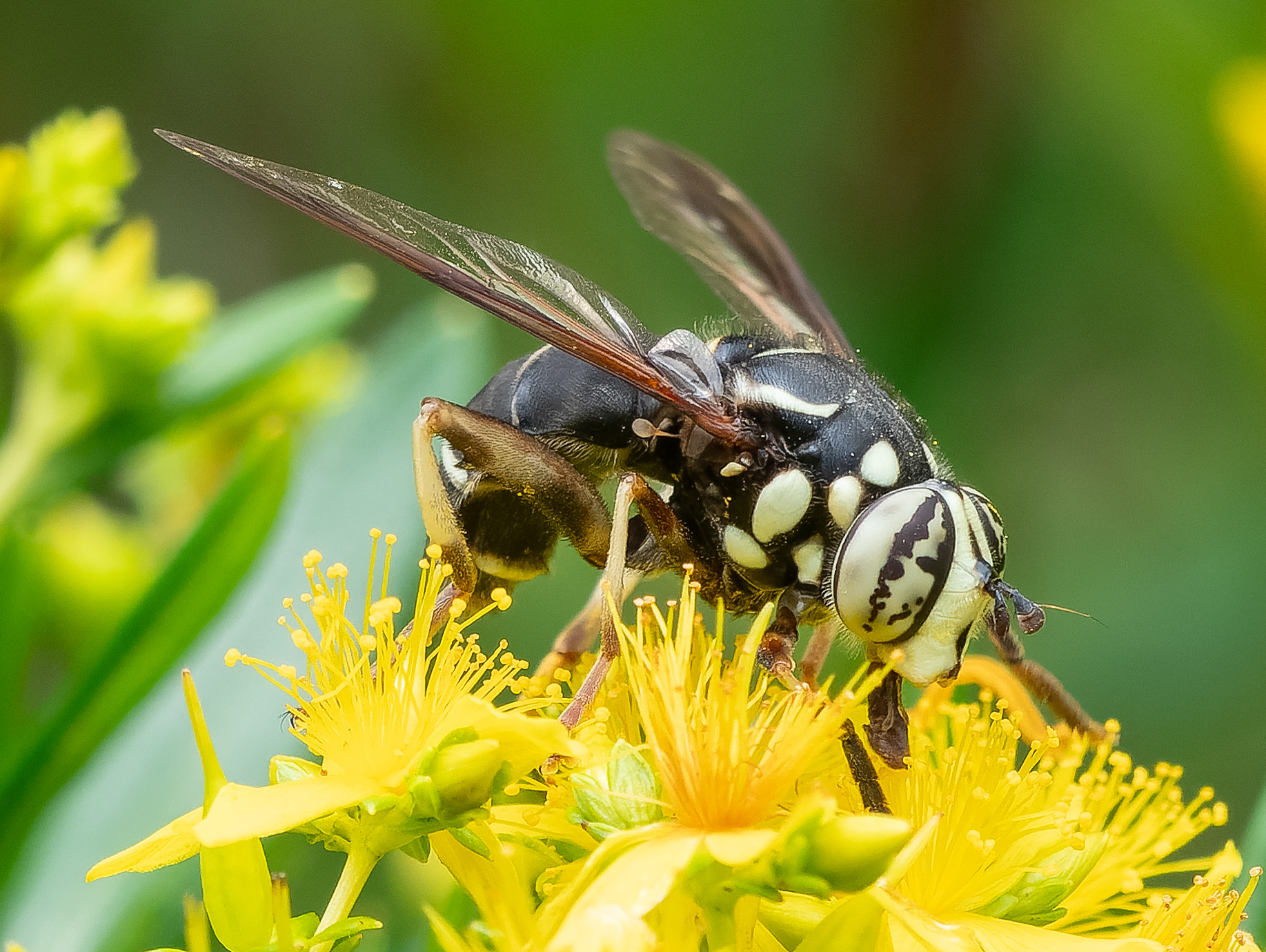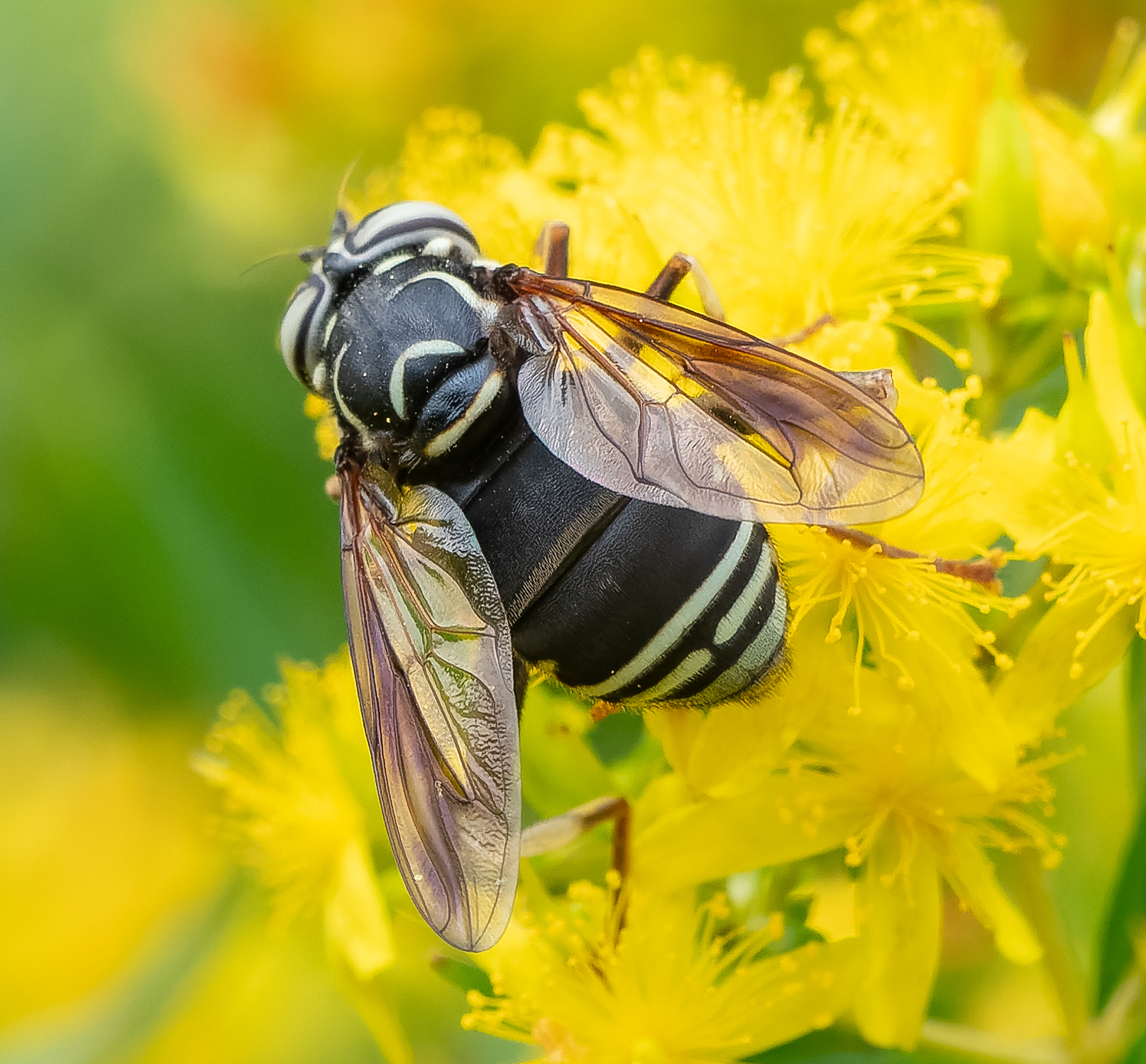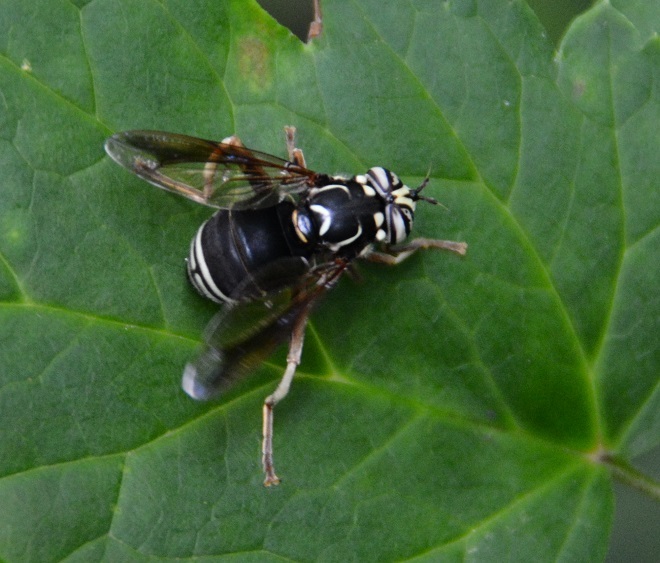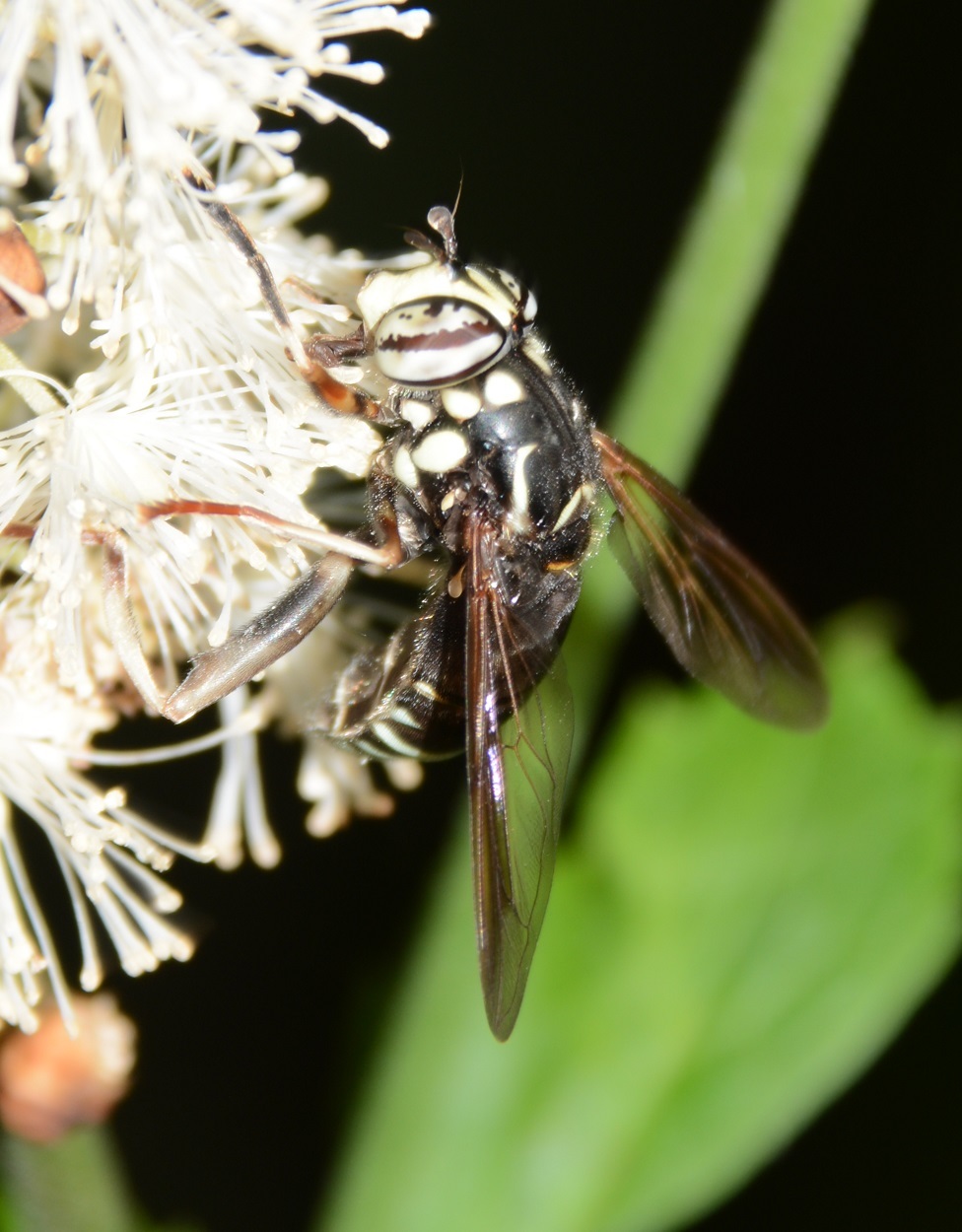Map Snapshot



4 Records
Description
Mimics Bald-faced Hornet. According to BugGuide, "...second tergite entirely black, eyes pale, with dark spots and vertical bands."
Seasonality Snapshot
Use of media featured on Maryland Biodiversity Project is only permitted with express permission of the photographer.
Bald-faced Hornet Fly in Garrett Co., Maryland (7/18/2024). (c) Jim Moore (Maryland), some rights reserved (CC BY-NC).
View Record Details
Media by
Jim Moore.
Bald-faced Hornet Fly in Garrett Co., Maryland (7/18/2024). (c) Jim Moore (Maryland), some rights reserved (CC BY-NC).
View Record Details
Media by
Jim Moore.
Bald-faced Hornet Fly in Frederick Co., Maryland (7/5/2016). (c) Chia aka Cory Chiappone, some rights reserved (CC BY-NC).
View Record Details
Media by
Chia aka Cory Chiappone via iNaturalist.
Bald-faced Hornet Fly in Frederick Co., Maryland (7/5/2016). (c) Chia aka Cory Chiappone, some rights reserved (CC BY-NC).
View Record Details
Media by
Chia aka Cory Chiappone via iNaturalist.
Source: Wikipedia
| Spilomyia fusca | |
|---|---|

| |
| Spilomyia fusca | |
| Scientific classification | |
| Domain: | Eukaryota |
| Kingdom: | Animalia |
| Phylum: | Arthropoda |
| Class: | Insecta |
| Order: | Diptera |
| Family: | Syrphidae |
| Subfamily: | Eristalinae |
| Tribe: | Milesiini |
| Subtribe: | Milesiina |
| Genus: | Spilomyia |
| Species: | S. fusca
|
| Binomial name | |
| Spilomyia fusca | |
Spilomyia fusca, the Bald-faced Hornet Fly, is a fairly common species of syrphid fly first officially described by Loew, 1864[1] This species is found in North Eastern America. Hoverflies get their names from the ability to remain nearly motionless while in flight. The adults are also known as flower flies for they are commonly found around and on flowers from which they get both energy-giving nectar and protein-rich pollen. The larvae are known as the short-tailed larva tailored for moist areas such as rot holes of trees.[2][3]
Distribution
[edit]References
[edit]- ^ a b Loew, H. (1864). "Diptera Americae septentrionalis indigena. Centuria quinta". Berliner Entomologische Zeitschrift. 8: 49–104. doi:10.1002/mmnd.18640080105. Retrieved 11 July 2021.
- ^ Rotheray, G.E. (1993). "Colour Guide to Hoverfly Larvae (Diptera, Syrphidae) in Britain and Europe" (PDF). Diperists Digest. 9: 155.
- ^ Skevington, J.H.; Locke, M.M.; Young, A.D.; Moran, K.; Crins, W.J.; Marshall, S.A (2019). Field Guide to the Flower Flies of Northeastern North America. Princeton Field Guides (First ed.). Princeton, New Jersey: Princeton University Press. p. 512. ISBN 9780691189406.



